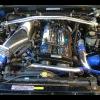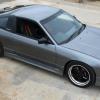Placement Of Afm
Announcements
-
Similar Content
-
Latest Posts
-
And if you can't drive bigger injectors with peak and hold as low impedance injectors during low pulse width, it's even harder to get a nice clean known amount of fuel.
-
From watching the 6 hour, it seems they've really got the class A2 Ford Mustang sorted, as it was cutting it up in lap times with he X1 cars, which are all those late model turbo BMWs. I have no real idea about either of them, but watching what was happening at the 6Hour, it made the Mustang which is meant to be in a slower class look very impressive.
-
Also Mark, perfect timing for you to offer Fab9 to open an Aus branch for them, where you'll setup all the contracts that basically you're just the paperman, everything goes through Aus for their gear, and you can buy a piece of paper off of them once every 3 months that's really expensive. Tariffs aren't paid on exports after all. And for it, you'll just take 10% cut for your name on the papers. Oh, and a free NC intake setup and air box...
-
I'm not sure if Neil did head studs, but it is definitely steel wheels in the turbo. unless he stitched you up and left a standard turbo on the new motor and not the high flow 😛
-
By robbo_rb180 · Posted
Hope it finds a good home and is well looked after and appreciated, be a great car for Morgan Park sprint series and the odd hill climb.
-







Recommended Posts
Create an account or sign in to comment
You need to be a member in order to leave a comment
Create an account
Sign up for a new account in our community. It's easy!
Register a new accountSign in
Already have an account? Sign in here.
Sign In Now